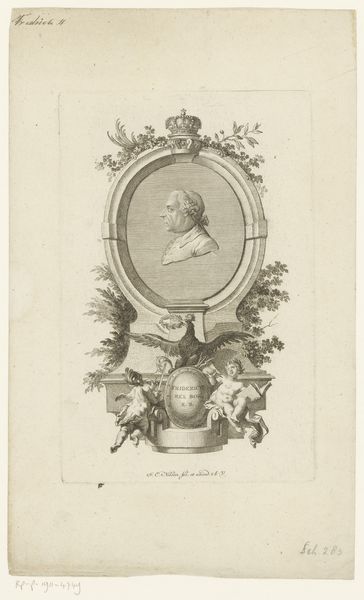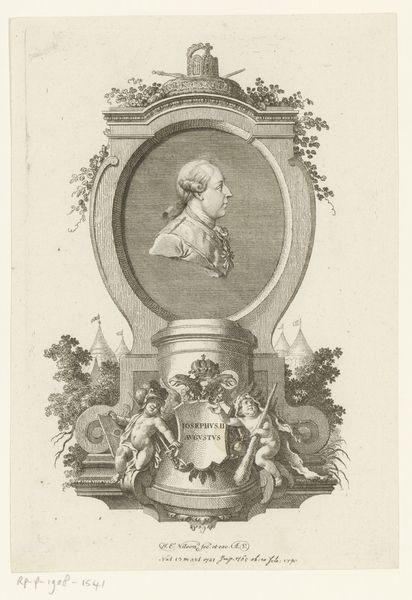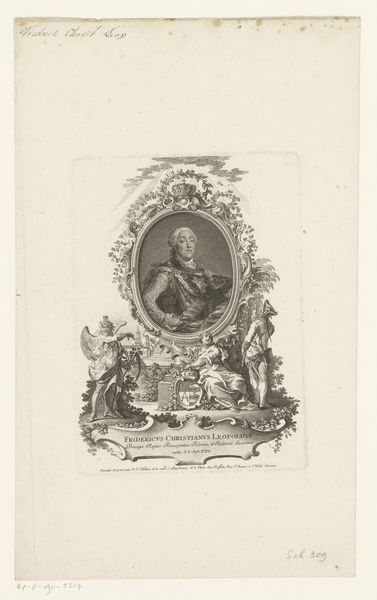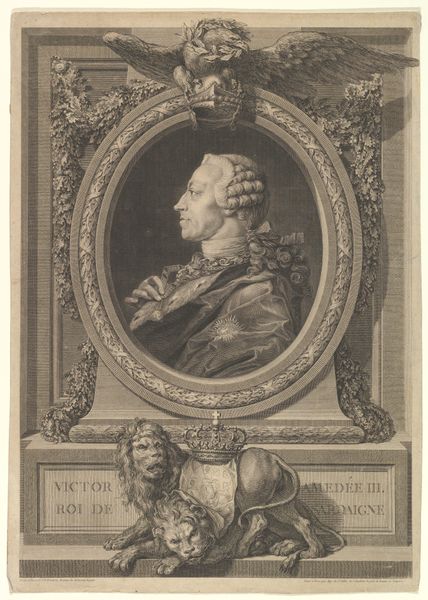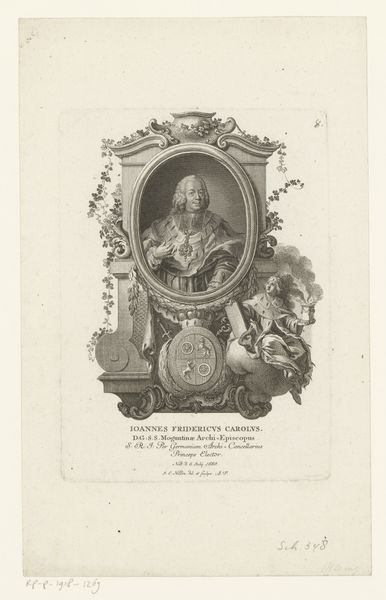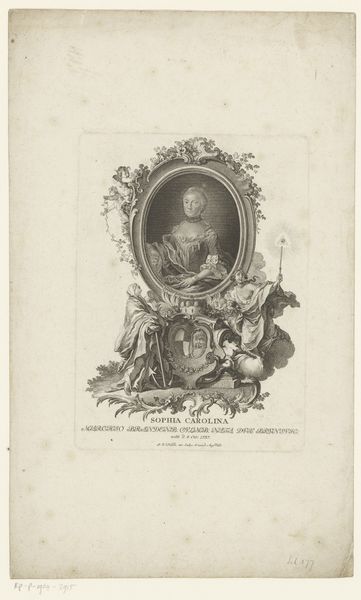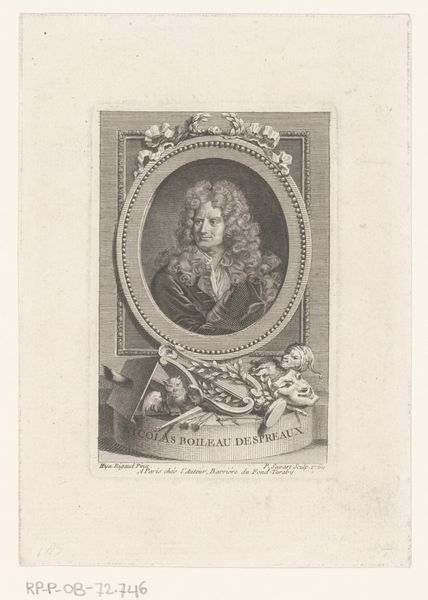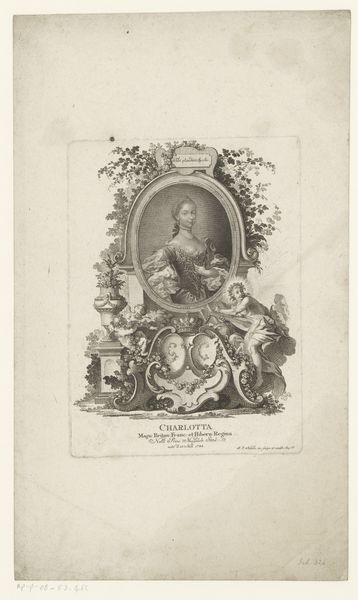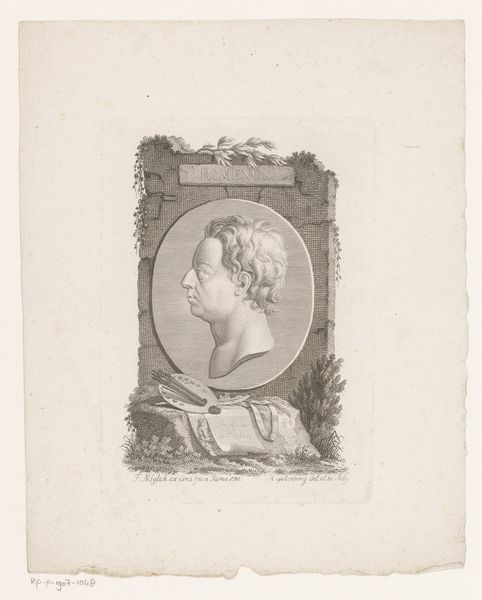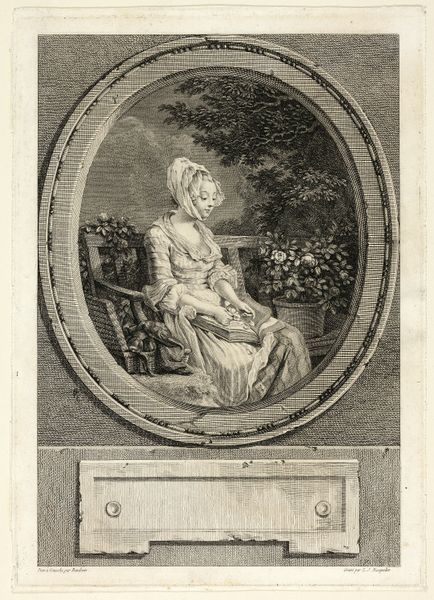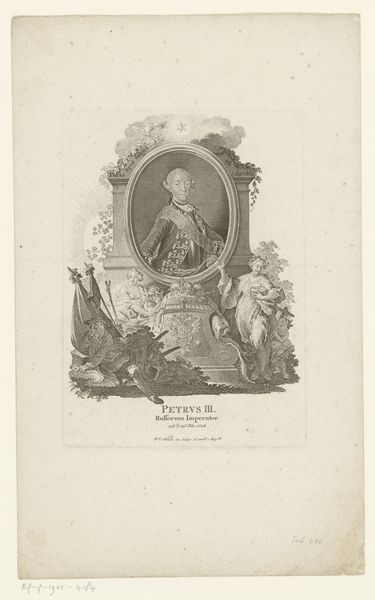
Portret van Catharina de Grote, keizerin van Rusland before 1788
0:00
0:00
Dimensions: height 247 mm, width 165 mm
Copyright: Rijks Museum: Open Domain
Curator: This is a portrait of Catherine the Great, Empress of Russia. Johann Esaias Nilson created this engraving sometime before 1788. It resides here at the Rijksmuseum. Editor: It’s a striking image, though somewhat unsettling. There's a coldness in the depiction of her face, framed as it is with elaborate, almost excessive, ornamentation. Curator: That ornamentation, characteristic of the Baroque style, draws attention to the intricate process of engraving itself. Note the crispness of the lines, the deliberate application of the tool to create depth and shadow. It really shows you the hand of the artisan. Editor: And think of who that artisan likely was! Probably working under very specific economic and political conditions to represent power. We need to remember who is producing images, for whom, and why? This isn’t a neutral portrait; it's a deliberate construction. Catherine’s profile, almost like a classical bust, speaks volumes about her attempts to legitimize her rule. Curator: Precisely! Consider the materials: the metal plate, the inks, the paper. Each one part of a supply chain embedded in the economic realities of the time. And the print itself was reproducible. Editor: Which means we can delve into issues of access and dissemination. Who owned these prints? How were they viewed and consumed across different social strata? The almost cartoonish cherub at the bottom seems strange today, and reminds us about gendered views and representation. Curator: Perhaps it spoke to the era’s understanding of power and image circulation, the intent of solidifying power through repetitive making, with emphasis on materials used. Editor: In fact, I’m finding this interesting, particularly regarding how the creation process, in that historical moment, highlights so much about the ways of seeing power and how gender was coded. It gives much to reflect on, and the piece acts as more than a symbol from an older moment, but in the continuing discussion today of such issues. Curator: It leaves one thinking about material and political structures across time, and it reminds me of the ingenuity of artisans, working across limitations.
Comments
No comments
Be the first to comment and join the conversation on the ultimate creative platform.
